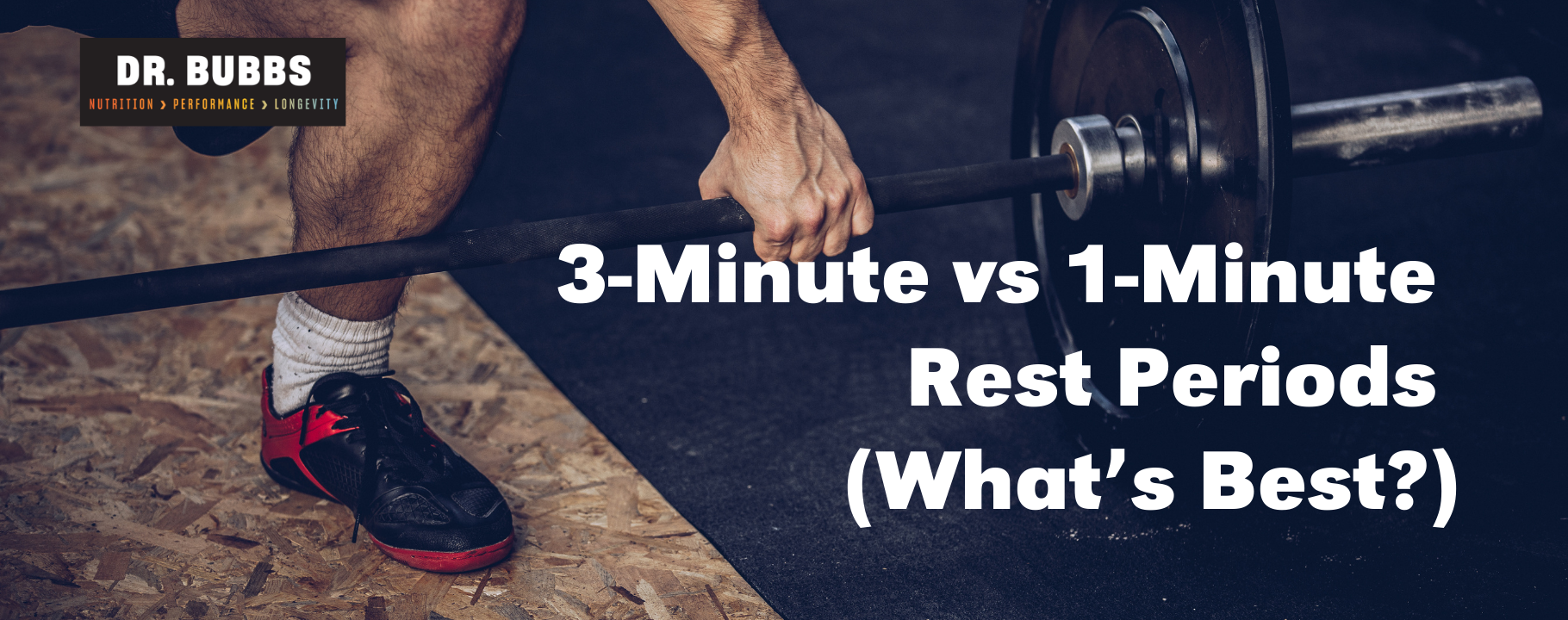3-Minute vs. 1-Minute Rest Periods (What’s Best?)
Tell me is this scenario sounds familiar. You’ve been training in the gym for a while, you made some nice gains and now your progress has stalled. You’re doing all the compound lifts – squats, deadlifts, bench press, chins, etc. – but you just can’t seem to get any stronger, or any bigger.
The answer might not be your exercise selection or rep scheme, but something a lot simpler that often gets overlooked; you rest periods.
A Common Midlife Mistake In the Gym
A lot of lifters can get caught up in the burn and build-up of lactic acid as a measure of training success, and therefore shy away from longer rest periods. Also, in midlife you’re often trying to squeeze a lot into a small amount of time. But ultimately, this can sacrifice your strength, and hypertrophy (aka - bigger muscles) goals.
New Science on Rest Periods for Strength
A new study investigated the effects of long rest periods (i.e. 3-minutes) versus short (i.e. 1-minute) during resistance training. Twenty-one young men who were regular lifters trained three times per week, 3 sets of 8-12 repetitions for seven exercises per session, over the course of 8 weeks. The researchers tested muscular strength, endurance, and thickness before and after the study. The results were eye opening.
The group that rested the had to take “long” rest periods had significantly greater gains in muscular strength (i.e. 1-RM squat and bench press), as well as significantly greater muscle thickness in the legs (and a trend for upper body improvements).(1)
It will not surprise strength coaches and trainers that taking longer rest periods helps with your maximal strength performance, but the fact that it can also increase muscle thickness makes it a great “rest” strategy for athletes or anyone trying to add more lean muscle and size to their frame.
Is Work Capacity Impaired with Longer Rest Periods?
You might be wondering if your work capacity will be impaired by the longer rest periods? Great question. The researchers found muscular endurance was equal between the two groups, so taking 3-minute rest periods didn’t reduce the work capacity of the lifters compared to their 1-minute counterparts. This goes against a lot of popular thinking, as a 1-minute rest interval has to be the most common prescribed in gyms across the country.
Practical Strategies to Incorporate Longer Rest Periods
How can you make this practical during your training session so it doesn’t take you 2 hours to train every session? Your best bet is to superset opposing body parts, or upper and lower body, to maximize your time. For example, you could alternate chest and back exercises, or alternate between a compound leg exercise and upper body push or pull movement.
You can also do some mobility work between sets for all those tight and achy areas that get ignored from lack of mobility and/or stretching. Foam or activation drills are also good bets whilst you wait for your three minute rest period to elapse.
To Sum Up
Try adding 3-minute rest periods to your compound lifts to ramp up strength and hypertrophy gains. If you’re struggling to get bigger or stronger, and feel like you’re doing all the right things in the gym, the answer to overcoming your plateau is likely simpler than you think (especially in midlife).
Dr. Marc Bubbs ND, MSc, CISSN, CSCS
Check out more articles in the "STRENGTH" SERIES...

